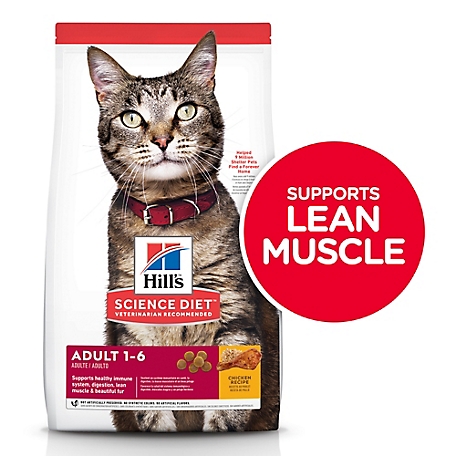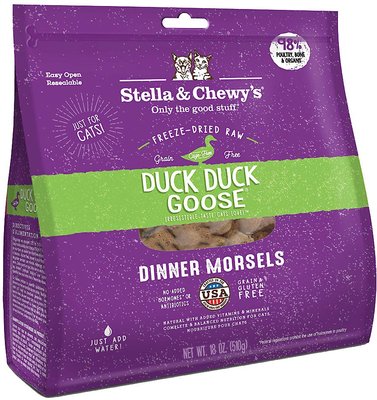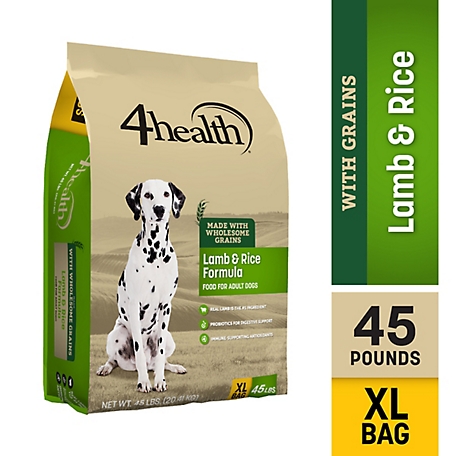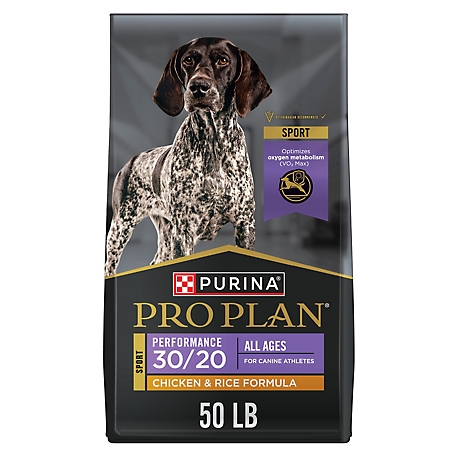Hill’s Science Diet Adult Chicken Recipe Dry Cat Food
Your adult cat needs a pet food that supports healthy digestion, shiny fur, lean muscles and a healthy immune system like the Hill’s Science Diet Adult Dry Cat Food. The adult dry cat food is made with high-quality and easy-to-digest ingredients and is specially formulated to fuel the energy needs of cats during the prime of their life. Made with natural ingredients, this dry cat food provides vitamin E plus omega-3 and omega-6 fatty acids to nourish your cat’s skin.
Your adult cat needs a pet food that supports healthy digestion, shiny fur, lean muscles and a healthy immune system like the Hill’s Science Diet Adult Dry Cat Food. The adult dry cat food is made with high-quality and easy-to-digest ingredients and is specially formulated to fuel the energy needs of cats during the prime of their life. Made with natural ingredients, this dry cat food provides vitamin E plus omega-3 and omega-6 fatty acids to nourish your cat’s skin.
- Taurine for heart health, plus balanced minerals for kidney and bladder health
- High-quality protein to help your adult cat build and maintain lean muscle
- Packed with vitamin E plus omega-3s and omega-6s to give your adult cat healthy skin and fur
- Dry cat food is made with natural ingredients
- 100% satisfaction guarantee
- Ideal for adult cats 1 to 6 years of age
- Not recommended for kittens and pregnant or nursing cats
Additional information
| Country of Origin | Made in USA |
|---|---|
| Flavor | Chicken |
| Health Features | Muscle Health, Heart Health, Immune System Support, Digestion Support, Skin & Coat Health |
| Indoor/Outdoor | Indoor and Outdoor |
| Life Stage | Adult |
| Primary Flavor | Chicken |
| Special Diets | Omega Fatty Acids |
| Packaged Height | 22 in. |
| Packaged Length | 4.5 in. |
| Packaged Width | 13 in. |
| Manufacturer Part Number | 10405 |










by Tiffany
I’ve been buying Hills Science Diet since the veterinarian advertised it years ago when i had my first cat that passed years ago. My newer cat is now 5 years old and I have been feeding her this brand since she was just weeks old. Only the best for my kitty. Her coat has bright fur is bright white (calico pattern) and shiny ! Shes playful at 5 yrs old, just like she was as a kitten! I like how the store is close, buying it online and theres a option to use curbside pick up!
by Keith
Our cats love this food. We have feed them only science diet food since we got them as kittens and they have thrived.
by Melissa
I was very happy to find out Tractor Supply carries Science Diet for my pets food source, especially if you are use to getting it from Pet Stores. Nice to have options.
by Sam
Good cat chow. Our three all love it. In fact, we needed a “slow feed” bowl to keep them from eating too much. Very reasonable price for a quality product.
by Patrick
This stuff will keep your cat healthy and active. Good stuff.